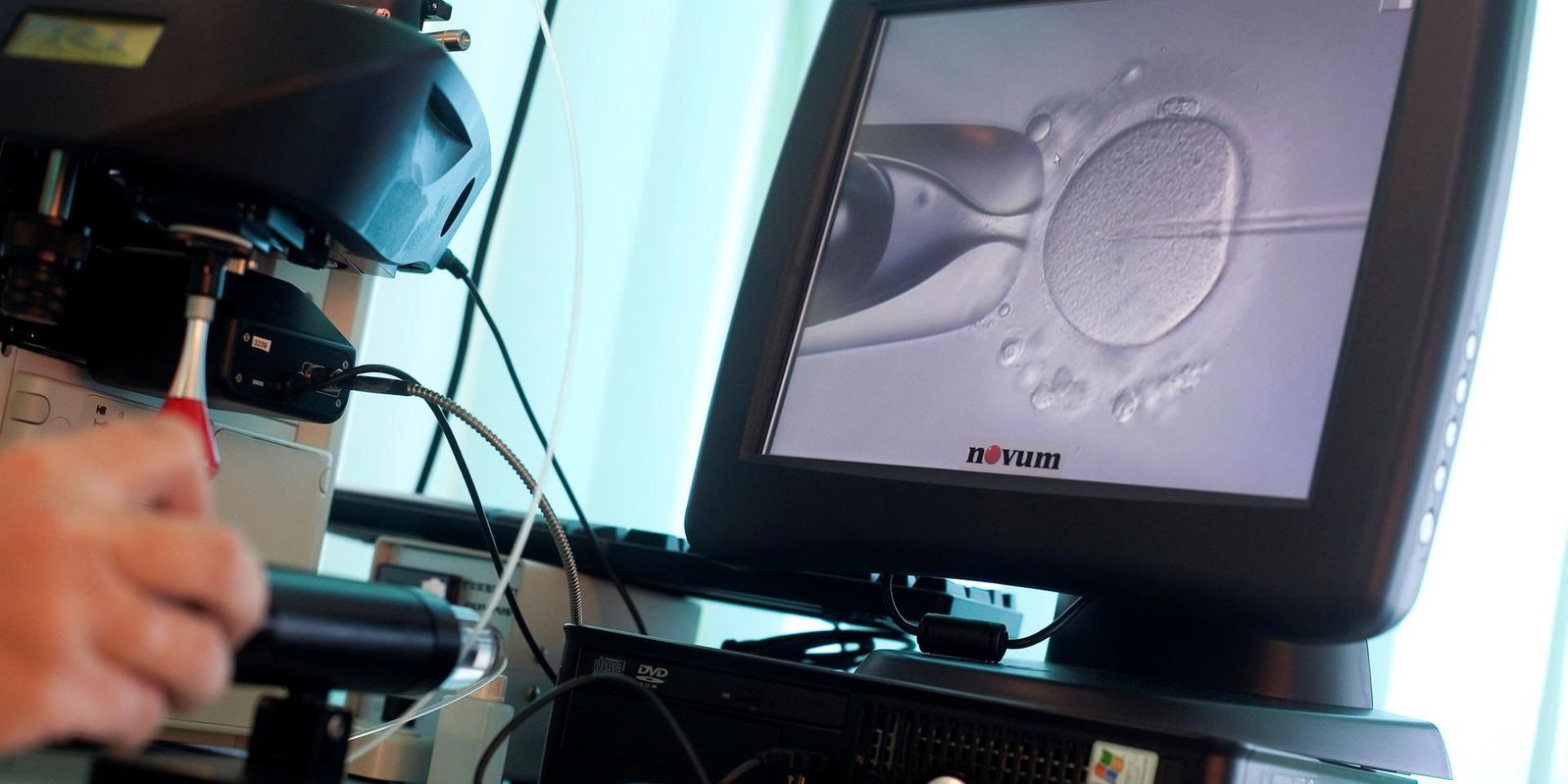After the update of the criteria for assisted reproduction in Brazil, which took place in July last year, the first babies of same-sex couples formed by men began to be born.
This was only possible thanks to the approval of the Resolution 2,294/2021 of the Federal Council of Medicine (CFM), which since the publication in July 2021 that allows the use of eggs from relatives, up to the fourth degree, to generate babies through assisted reproduction.
The first babies to be conceived after the publication of the regulation are the twins Marc and Maia, sons of the couple Robert and Gustavo. The children, who are two months old, are the reason for the parents’ joy.
“It is a gigantic pleasure, it has been the most special moment of our lives. There are moments of despair too: when they both start crying and sometimes we don’t know what to do, then we try one thing, try another, give the milk, change diapers, until we are able to align. But apart from that, it’s a very lively routine, it’s very tasty”, says engineer Gustavo Catunda de Rezende.
The couple used Robert’s genetic material, Gustavo’s sister’s egg and Gustavo’s cousin’s womb, who carried the twins during 35 weeks of pregnancy.
The relationship with the cousin remains the same. “We talk practically every day. Unfortunately we moved to São Paulo, she is in Brasília. But soon she should come visit us, visit the babies. It’s a huge pleasure, but it’s always good to remember that a supportive belly doesn’t mean a change in family arrangement. So her relationship with my children is the same as if she had been born from my own womb, so she is the babies’ aunt or cousin, as they prefer,” Gustavo said.
The couple of engineers and content creators created the profile @2depais on Instagram to share the entire process of in vitro fertilization, pregnancy, childbirth and the best moments of Marc and Maya’s lives.
Change
Prior to the update of this resolution, female homosexual couples were only allowed to have shared pregnancy, where one of the women captured the eggs and the other conceived, with donated sperm. “The 2021 resolution entered the understanding that male couples have this complete freedom. But, in the case of the male couple, it cannot be embryos from sperm from one or the other, it has to be from one or the other, because the genetic load needs to be known”, explains the physician specialist in assisted reproduction at Huntington Reproductive Medicine. , Thais Domingues.
The resolution says that “In the event of embryos formed from different donors, the embryo transfer must be carried out with embryos from a single origin for the safety of the offspring and traceability”.
advance
A member of the CFM Technical Chamber dedicated to the topic of assisted reproduction and former president of the Brazilian Society of Assisted Reproduction, physician Adelino Amaral Silva, a specialist in Assisted Human Reproduction by the Brazilian Federation of Gynecology and Obstetrics (FEBRASGO), considers the update of resolution an advance.
“The resolution followed the evolution of family models. Homoaffective union is already an entity recognized by the Federal Supreme Court, it is totally legal. The CFM really had to legislate in favor of these couples. This was a proposal that came out of the technical chamber so that you don’t discriminate, that you include and that’s how your family has the right to do. I consider it a breakthrough. In the last ten years, the council has always been at the forefront to improve its resolutions according to the evolution of family models and the evolution of the sociological profile”, says the doctor.
Procedure
There are five assisted reproduction techniques, including in vitro fertilization (IVF), an option used for homosexual couples. IVF follows the following steps: about ten days after menstruation, a subcutaneous medication is given, which is an injection in the belly to make the follicles grow, called ovarian stimulation.
“So on the last day, which would be close to the woman’s normal ovulation day, we remove the eggs vaginally and these eggs are fertilized with donor semen, in the case of the female couple, and after five days the eggs are formed. blastocytes [células primordiais do embrião]. If there is no indication for freezing, they can be introduced already in the woman, who can be either in the one who removed the eggs, or in the other, if she has prepared the uterus to receive the embryos”, explains the doctor.
For same-sex couples formed by men, whoever does this egg removal is a donor. The surrogate mother, on the other hand, must belong to the family of one of the partners in a degree of consanguinity up to the fourth degree, as long as there is no consanguinity. In addition to this bond, the assignor must have at least one living child. In Brazil, the “surrogacy” is not allowed, that is, the temporary transfer of the uterus cannot have a lucrative nature.
“The eggs can be frozen or it can be removed at the moment they are going to collect the semen. the two can reap [o sêmen] to fertilize, but at the time of transfer, only material from one of the two men can be fertilized”, reinforces the specialist.
transgender
Another novelty of the resolution is that the group of transgender people for assisted reproduction treatment was inserted. However, preparation should take place before the sex change, advises the doctor.
“It is extremely important, before making the sex change, with hormone use and everything else, to advise them to freeze both the egg and the sperm, so that in the future they do not have to go through the discomfort of stopping hormones to try to rescue a function of the reproductive organ”.



















